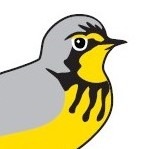By Ellen Jakubowski, Communications Specialist, Bird Studies Canada

Eight more bird species are vying for the chance to represent North America in the Twitter World Cup of Birds. From June 12-24, you can vote in Twitter polls to determine which half will be eliminated and which half will join the four species that have already been selected to advance to the international playoffs.
To help select the final four North American champions, follow @BirdStudiesCan and the #TWC_Birds_NAmerica hashtag, and vote in the four remaining polls.
The Twitter World Cup of Birds (#TWC_Birds) is a friendly international competition hosted by the British Ornithologists’ Union. Its goal is to get people voting, tweeting, and learning about some of the world’s most remarkable birds – many of which are species of conservation concern.
To help you decide which species to support, here are some fast facts about the eight remaining North American contenders (numbers 9-16):
- Snowy Owl: This unmistakable owl is one of the world’s largest. A true icon of the Arctic, it breeds in the northern circumpolar region. Some winters, these nomadic birds pop up across much of North America, delighting birders and even sometimes making appearances in densely populated urban areas. This species has been assessed as globally Vulnerable.
- Canada Jay: This gregarious corvid is found in coniferous forests across Canada and parts of the U.S. It is incredibly hardy, caching food items to retrieve in leaner times and nesting in the frigid late winter. This species has many names, but its official English name (as identified by the American Ornithological Society) will soon return to “Canada Jay”, replacing “Gray Jay”.
- Long-billed Curlew: This shorebird is aptly named – reminding one of Pinocchio, or perhaps the more dignified Cyrano de Bergerac. It breeds in grassland habitats in western North America and winters in the southern U.S., Mexico, and Central America. This species has declined significantly in North America over the past 150 years.
- Montezuma Quail: The male of this species sports boldly-patterned plumage, but its elusive tendencies make it difficult to spot in its grassland and woodland habitats. This mysterious quail resides year-round in parts of Mexico and the southwestern U.S. When startled, it leaps directly upwards, flies for a short distance, and lands somewhat clumsily.
- Common Loon: This familiar and graceful bird nests in every Canadian province and territory. Its elegant patterns, adorable young, and thrilling call have made it a favourite across the country and beyond. Unlike most birds, loons have solid bones – this makes it easier for them to swim and hunt under water.
- Black-and-white Warbler: Is it a nuthatch? Is it a tiny zebra? Nope – but it’s one of the coolest wood-warblers, and one of the first to arrive on breeding grounds in the spring (after migrating from as far south as Colombia). It does quite a good nuthatch impression as it creeps along tree trunks probing for insects.
- Iiwi: This ruby-red honeycreeper is dazzling, and its bill may bring back fond memories of Gonzo from the Muppets. But sadly, this jewel of Hawaii’s forests is imperilled by its vulnerability to avian malaria, and by the impacts of habitat loss and invasive species. The American Birding Association selected the irreplaceable Iiwi as its 2018 Bird of the Year.
- Bobolink: Last, but not least, is the endearing and unfortunately declining Bobolink. Males of this species are known for their dapper black, white, and yellow plumage and bubbly song. The brown-striped females have an understated beauty of their own. These birds are found in native grasslands, agricultural lands, and other open areas, and boast an impressively long migration.
If you missed our post on the first eight species in Round Two (numbers 1-8), you can go back and read it now. At the time of writing, Red-headed Woodpecker and Tufted Puffin have been voted in to the international rounds. Wood Thrush and Laysan Albatross have been eliminated.
Thank you for being part of the Twitter World Cup of Birds and for helping to shine a global spotlight on some truly amazing species!


